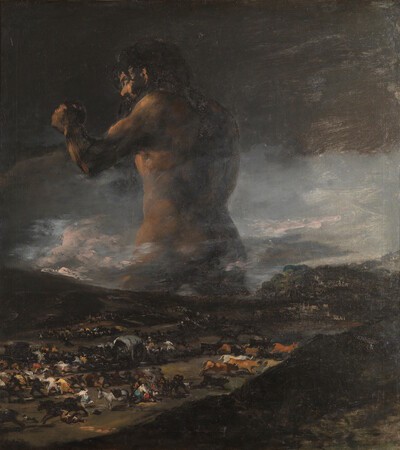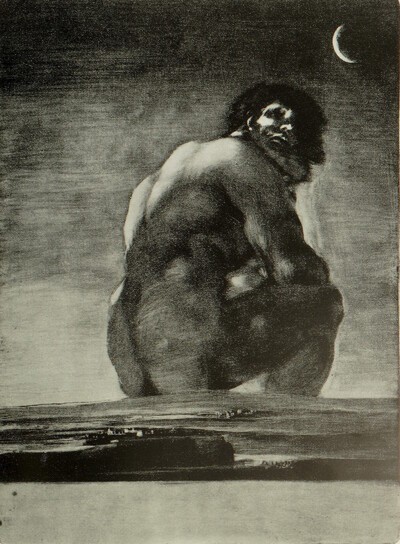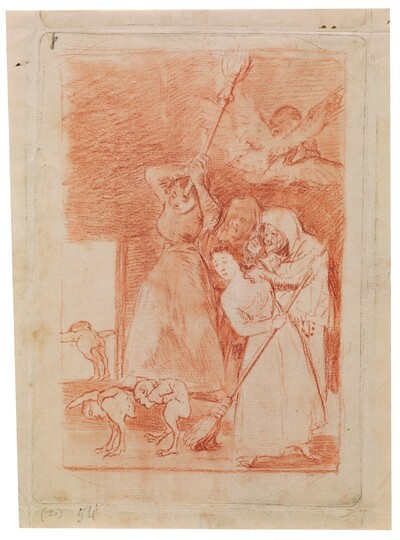- Cronología
- Ca. 1797
- Ubicación
- The Prado National Museum. Madrid, Madrid, Spain
- Dimensiones
- 242 x 179 mm
- Técnica y soporte
- Sanguine on laid paper
- Reconocimiento de la autoría de Goya
- Documented work
- Titular
- El Prado National Museum
- Ficha: realización/revisión
- 20 Aug 2021 / 19 Apr 2023
- Inventario
- D4352 v.
54 (in pencil, recto, bottom left-hand corner)
Watermark: "H C WEND / & / ZOONEN".
The drawing passed by inheritance in 1828 to Javier Goya, the painter's son, and in 1854 to Mariano Goya y Goicoechea, the artist's grandson. It was subsequently owned by Valentín Carderera (ca. 1861) and Mariano Carderera (ca. 1880). In 1886 it was acquired from Mariano Carderera by the General Direction of Public Instruction and was assigned to the Prado Museum, where it entered on 12 November 1886.
This is the reverse of the first preparatory drawing for the engraving They're Plucked, from the series of the Caprices. The figure of a giant in front of a balcony is at the centre of the composition. He is dressed as if he were a monk, wearing a habit and hood. With his head lowered, he looks down as if saying a prayer while a group of people laugh behind him. Gassier states that this figure may be in the line of the colossi that Goya was so fond of and which can be found in paintings (The Colossus or Saturn eating a Son) as well as in engravings (The Colossus) and drawings. The composition of the balcony may be reminiscent of the balustrade painted by Goya on the dome of the Chapel of San Antonio de la Florida in Madrid (Miracle of Saint Anthony of Padua).
There is no evidence that this drawing was engraved, although copper marks are visible on the paper.
-
Francisco de Goya. El proceso creativo de los CaprichosMuseo Nacional del PradoMadrid1999
-
Melbourne2021
-
MadridMuseo del Prado1954n. 198
-
Vie et ouvre de Francisco de GoyaParísOffice du livre1970p. 186, cat. 633
-
Dibujos de Goya, 2 volsBarcelonaNoguer1975p. 174, cat. 137
-
ZaragozaCaja de Ahorros de Zaragoza, Aragón y Rioja1980-1982p. 95
-
MadridMuseo Nacional del Prado1999p. 145
-
Universidad de Salamanca2008





